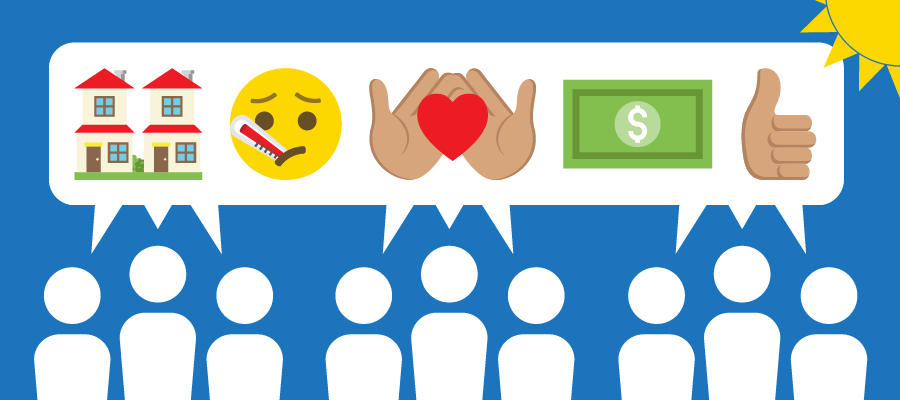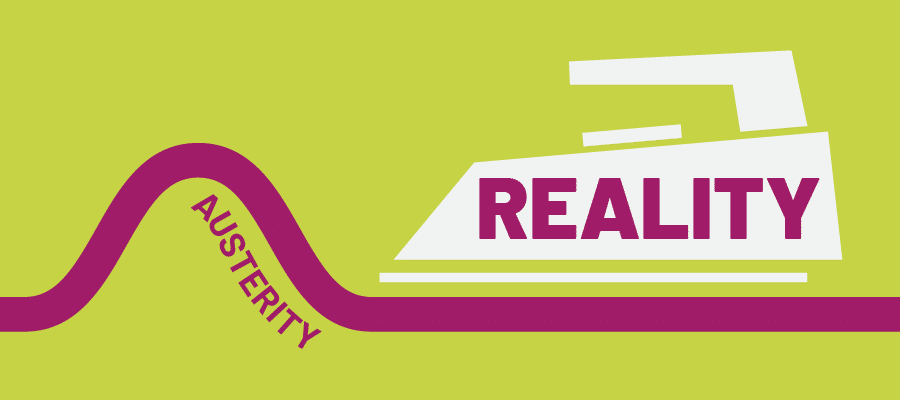BC’s COVID-19 emergency spending leads all provinces, but we’re not out of the woods yet

BC has invested far more in its COVID-19 emergency response than any other province in the country. The province also provided the highest per capita level of support to individuals at an average of $800 per person. These are among the findings in a new report from CCPA’s national office, which examines the scale of federal and provincial emergency spending across the country.
The report tracks emergency spending across a range of areas including supports to individuals and businesses, municipalities, schools, childcare and infrastructure. Federal support to individuals and businesses makes up by far the largest share, driven by programs like the Canada Emergency Response Benefit and the federal wage subsidy program for businesses and non-profits.
Altogether, federal and provincial governments have earmarked $374 billion to emergency COVID-19 spending, with the feds contributing 92% of that total, and the remaining 8% coming from the provinces collectively.
It is entirely appropriate for the federal government to carry most of the load in a time of national crisis given its deeper pockets and lower borrowing costs compared to the provinces. But many provinces could be doing much more. And some are sitting on billions in unspent emergency funds transferred by the federal government or earmarked from provincial coffers.
The picture varies sharply between provinces. BC is the clear leader in the overall scale of its emergency spending. Robust public investment is essential to protect lives, livelihoods and a healthy economy in the face of the pandemic, so this is to the province’s credit.
It is appropriate for the federal government to carry most of the load in a time of national crisis.
BC has invested a higher share of its gross domestic product (GDP) in COVID-19 emergency spending than any other province at 2.9%. This is double or more what the other large provinces are contributing. Quebec is investing 1.5% of its GDP with Ontario and Alberta only putting up 1% of theirs. BC is also contributing the largest share of emergency spending relative to the federal government, 16% of the total.
At an average of $800 per person, BC’s provincial supports for individuals are much higher than those of the next highest province, Québec (8 times higher in fact). This spending comes in the form of programs like the BC Emergency Workers’ Benefit, the BC Recovery Benefit of up to $1000 that is rolling out now, and the $300 per month Crisis Supplement to those struggling to survive on inadequate social assistance and disability payments. However, that vital Crisis Supplement was recently replaced with a “Recovery Supplement” of $150 per month that is set to expire at the end of March.
The CCPA report shows that, adjusted for its population size, BC has also provided more support to businesses than any other province at $438 per capita. The next highest level of support came in Alberta at $323 per capita.
Among the provinces, BC is making the best use of available federal funding for rapid housing measures, buying and converting hotels to emergency housing. The funding was made available to whomever was prepared to act quickly, and BC is set to claim almost one quarter of it nationwide.
The report finds that BC was rare among the provinces in committing to COVID-19 health care expenditures early in the pandemic, even before federal dollars became available, including through the single-site order in long-term care and assisted living. BC is also fully spending emergency federal health transfers unlike some provinces who are sitting on the money.
In the end, the federal government has covered 94% of BC’s health care tab for COVID-19. As the pandemic continues, BC has plenty of room to double down on eradicating the virus and to invest further in key areas like long-term care at the same time.
Since specific plans haven’t been officially released, the report did not include the $3 billion per year committed by the BC NDP in its platform for additional infrastructure investments over the next three years, which would boost BC’s standing even further.
BC is contributing the largest share of emergency spending relative to the federal government, 16% of the total.
There was one category where BC did leave some federal money on the table: it only claimed $371 million of a possible $401 million for a cost-shared program topping up wages for essential workers. There have also been serious difficulties in getting those dollars into the pockets of workers.
Of course, doing better than the other provinces doesn’t mean BC is doing enough—the bar set by provincial governments overall is very low. There remain important areas of public investment where more action is urgently needed.
A top priority should be to increase and secure the incomes of people depending on social assistance and disability payments. As mentioned, BC added a temporary Crisis Supplement of $300 per month to woefully inadequate rates last year. Yet this top-up has since been reduced to $150 per month and is scheduled to expire.
As we have long argued at the CCPA, BC needs a large and permanent increase to social assistance and disability rates, which are abysmally low and keep people in deep poverty despite some modest increases in 2018 and 2019. (Can you fathom trying live on $710/month? That is the current rate for a single individual considered employable, not including the temporary supplement.)
In the midst of a pandemic, BC urgently needs legislated, fully paid sick days for all workers as a right of employment. The temporary federal sickness benefit that BC helped pressure the federal government into implementing is better than nothing, but it falls short of what’s needed.
Both the provincial and federal governments have also erred in allowing their business relief programs to flow to large, profitable corporations rather than better targeting small businesses. In the federal case, this came in the form of design flaws in the wage subsidy program, which we warned about from the get-go. In the provincial case, a key culprit is the blanket $714 million commercial property tax cut announced at the beginning of the pandemic.
Doing better than the other provinces doesn’t mean BC is doing enough—the bar set by provincial governments overall is very low.
Much the same can likely be said on the public health side: BC leads many other provinces, but that doesn’t mean we don’t need to do better. While this is beyond my area of expertise, other researchers have made a strong case that a more aggressive approach is needed, especially as we race to vaccinate amid a growing number of COVID-19 variants.
On the whole, the new report shows that both the federal and BC governments have spent big in their pandemic responses, and these public investments have played a vital role in backstopping our economy and keeping people safe. But we are not out of the woods yet with this pandemic. Continued emergency investments are needed, and when the disease itself is finally brought under control, there’s going to be a tremendous amount of rebuilding and recovery work to do.
Our recovery must prioritize finally addressing the social inequities and economic vulnerabilities that the pandemic has only magnified. We’ll need to act together through our public institutions to invest aggressively in stronger health and seniors care systems, building homes for all, universal child care, an end to the poisoned drug supply and opioid crisis, and a green economy. The good news is these types of investments are exactly what’s needed to enable recovery from a huge economic shock and chart a path to a healthy economy for the long term.
Topics: COVID-19, Economy, Health care



